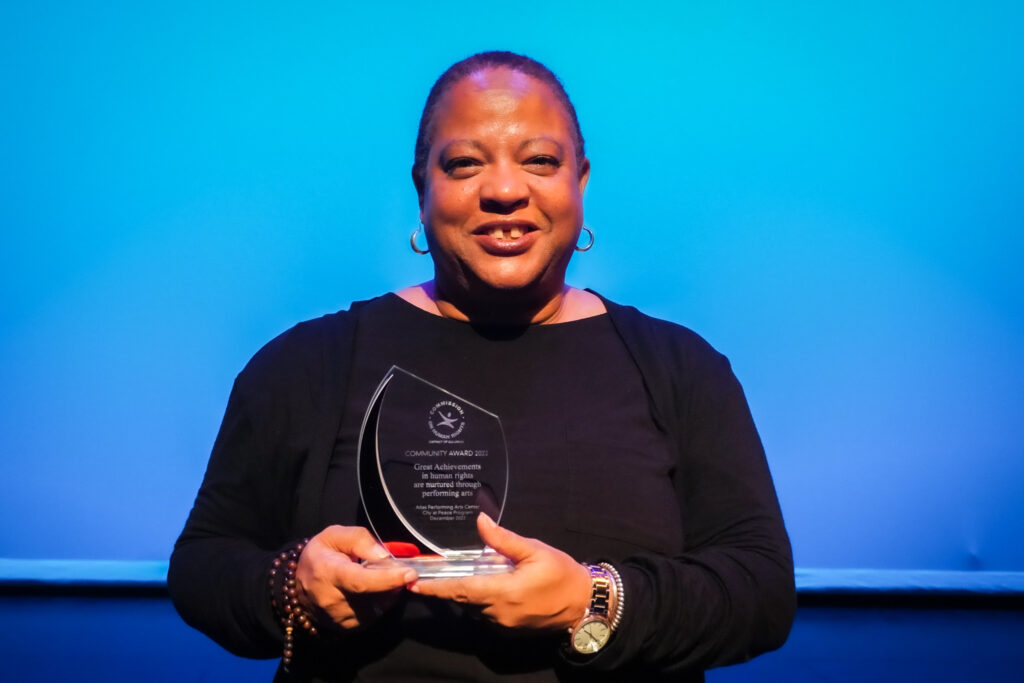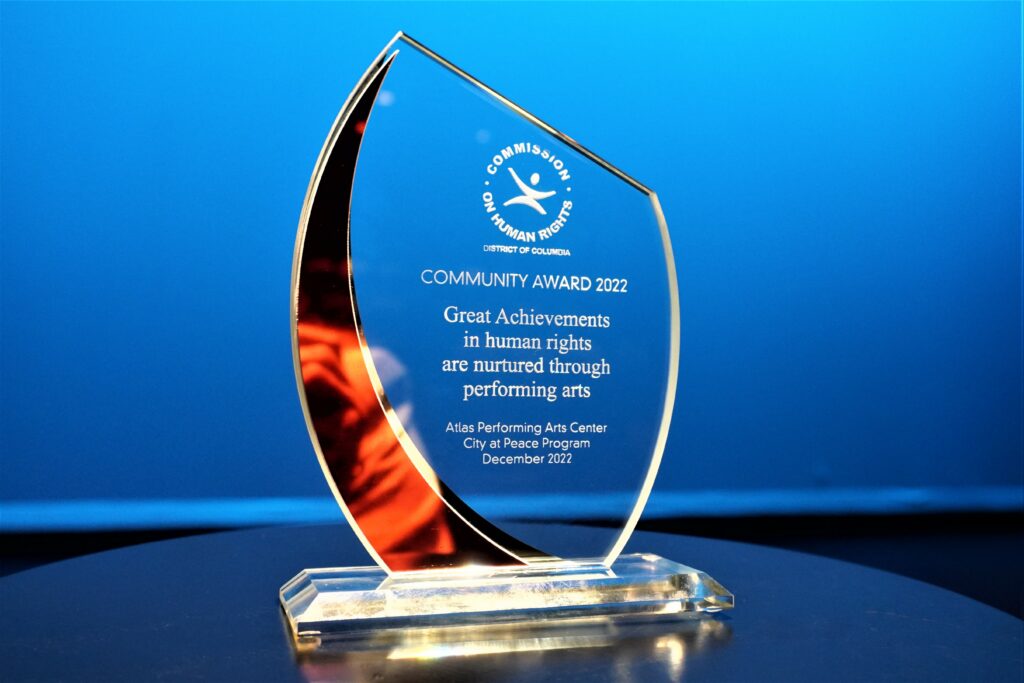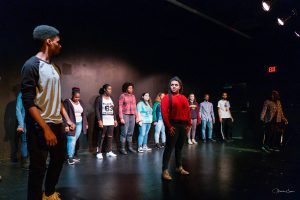City at Peace
CITY AT PEACE
City at Peace (CAP) is a youth development program, which provides a safe, collaborative and nurturing space for young people to examine systems of oppression that marginalize based on race, gender, age, ethnicity, sexuality, and values. Rooted in social justice, City at Peace uses performing arts as a learning tool to develop skills in dance, theatre, voice, and stage production, as well as skills in conflict resolution, personal storytelling, empathy, understanding, and leadership. Based on their experiences, City at Peace participants will create an artistic production that shares their ideas for change in a performance.
This program is free for participants. Funding is provided by major institutional and individual donor support including the DC Commission on the Arts & Humanities, and The Max and Victoria Dreyfus Foundation, Inc.
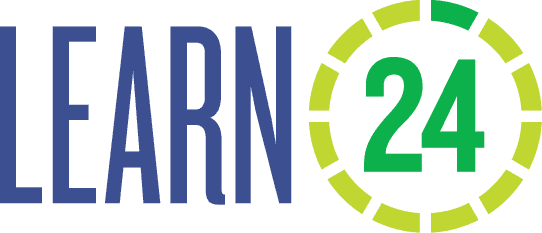
PARTICIPANTS: Ages 14-24
All genders, all races, all sexual orientations, all classes, artists and non-artists, activists, poets, dancers, actors builders, and dreamers. Expect to meet youth from different schools and neighborhoods in the DMV with questions, concerns, and ideas about race, gender, ethnicity, sexuality, and the role they play in society. Bring your concerns, creativity, and ideas for change.
The Program Director is an acclaimed facilitator, artist, and educator, Sandra Holloway, reachable for all questions at sholloway@atlasarts.org.
Sandra Holloway is the artistic director of City at Peace in Washington, DC, a youth development organization that uses the performing arts to teach and promote cross-cultural understanding and non-violent conflict resolution. Each year, she leads groups of diverse teenagers through intensive training in theater, dance, and music, as well as peace-building across race, class, gender, religion, and culture, culminating in a full-length musical based on their own lives, written and performed by the young people themselves (telling each others’ stories). Holloway was featured as one of six choreographic artists in Black Expressions at Washington, DC’s Lincoln Theatre, and has worked professionally at the Kennedy Center, the Theatre of the First Amendment, George Mason University, The Studio Theater, and Dance Place. She attended the University of the Arts in Philadelphia, winning awards for her choreography and receiving her BFA in Dance/Choreography.
Together we can make a city at peace
“City at Peace gave me a purpose in life. It gave me vocabulary for things I had been feeling and gave me a way to express that is healthy, fun, and sometimes hard, but very necessary.”
–Program Participant
City at Peace is a youth development program for teens and young adults ages 14-24, which provides a safe, collaborative and nurturing space outside of school and other environments where they can examine issues and conditions that divide them.
City at Peace is rooted in social justice and uses performing arts as a learning tool to develop skills in dance, theatre, voice and stage production, as well as skills in conflict resolution, personal storytelling, empathy, understanding, and leadership.
Award-Winning Program
Inaugural Community Award Recipient 2022
Honoring great achievements in human rights nurtured through the performing arts
DC Commission on Human Rights
Meet two alumni of the City at Peace program in the podcast interview below at the 2020 Intersections Festival.
Artist Talk
Hosted by Don Napoleon
The Napoleon Complex Project
City at Peace alumni: Avital Li and TyJuan Brown
Closed caption available.
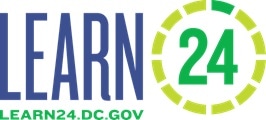
WE COMMIT TO A DECADE OF SERVICE TO THE YOUTH IN OUR PROGRAM.
Our Goal
The goal of City at Peace is to use the arts to develop a diverse group of effective leaders (ages 14-24) who can authentically collaborate, act, think, communicate, and solve challenges through non-violence in any life situation today and in the future to affect positive change.
Our Methodology
City at Peace uses theatre and the performing arts as a tool to examine social conditions that marginalize groups of people, with an emphasis on the marginalization of young people, to transform lives. Participants collaborate to engage in cross-cultural examinations, social awareness and social change strategies, non-violent conflict resolution, and leadership training in an effort to create understanding, accountability and forgiveness.
How we Serve
The City at Peace program is structured at its core, on four youth development principles. These principles have been recognized by the United Way of the National Capital Area and are as follows:
Self Development
Safety and Structure: A perception that one is safe in the world and that daily events are somewhat predictable.
- Feels safe in school, program and neighborhood
- Signs in and out of program
- Enforces rules and regulations with peers
Community Development
Belonging and Membership: A perception that one values, and is valued by, others in the family and in the community.
- Interacts easily with peers
- Joins or volunteers in one or more organizations or clubs
- Has one or more close friends
Building a Compelling Future
Mastery and Future: a perception that one is making it and will succeed in the future.
- Is able to identify three future goals and how to attain them
- Prepares for or asks questions about the future (e.g. When is the next test?)
- Is able to identify three recent accomplishments
Employability
The ability and motivation to gain the functional and organizational skills necessary for employment, including an understanding of careers and options and the steps necessary to reach goals.
- Schedules time and plans ahead
- Follows directions
- Negotiates and problem solves
Creating Positive Change through the Stage: A Conflict Resolution and Arts Teaching Framework for City at Peace
The City at Peace Guided Curriculum is a two-pronged, youth-driven approach steeped in examining unequal social conditions and leads to the creation of strategies to interrupt negative behaviors based on a non-violent approach and developing performing arts skills and technique, empowering youth to create a positive change in their communities.
The City at Peace curriculum framework is derived and driven by youth, co-facilitated by a friendly adult presence, or F.A.P. The framework is youth driven and includes philosophies derived from non-violent activists such as King and Gandhi and is supported by friendly adult presence.
The curriculum is offered in two units. Short-term outcomes are achieved in weeks 1-20, while Mid-term outcomes are achieved in weeks 21-40. Long-term outcomes are achieved beyond 40 weeks as young people’s conflict resolution and performing arts skills are refined and through participation in the Alumni Network and Mentorship programs.
“Living in Anacostia, transitioning from public to private school, and back again, I have been told that I would not live to see 18 years old by numerous adults in the school system when I was young. At 16, I became three things. The first was a father to a handsome, and now a successful, young sailor son. The second, a cast member of City at Peace. Finally, a 38 year old black man with a wife and child, working and attending college for game art and design. All of this without a criminal record or any negativity around me. A great deal of this is due City At Peace. This family (as I call them), IS the level of support and positivity that should be in the lives of ALL youth. It doesn’t matter if you are from D.C., Alexandria, Baltimore, or Great falls. I am forever grateful for their guidance, and allowing me to tap my potential through being realistic and direct in this form of Performing Arts. Especially Sandi. I love you, momma. Ginny Lee thanks you from beyond.”
Kassim (K.C.) McNeilCity
Peace Cast member: 1997-2002
“I have had the opportunity to work with many organizations that profess to want to help children and work with public schools. Most of them have high ideals and goals but have difficulty translating those ideas into reality as well as staying committed to working with our children. City at Peace, however, was able to talk the talk and walk the walk. On the first day, they were able to capture the hearts of our children and kept that fire burning until the end of the program. They were able to maintain a high standard of behavior and expectations, kept students engaged and active, and presented a rigorous, thought-provoking, insightful curriculum that made a lasting impression on the students.
The true reflection of the success of any program is the testimony of the young people involved. They are brutally honest and if they don’t feel that your program has value, they will not attend. Our students came to the sessions religiously, even when we had to alter the meeting site because of schedule conflicts. In fact, a student even came to class after they had taken their finals for their academic courses. When I talked to the students and asked if they wanted to bring the program back next year they ALL enthusiastically replied yes!”
Dr. Maurice Butler
Theodore Roosevelt High School
“City at Peace gave me a purpose in life. It gave me vocabulary for things I had been feeling and gave me a way to express that is healthy, fun, and sometimes hard, but very necessary.”
Program Participant
“I grew by leaps and bounds. I learned how to listen and empathize. I learned how to share my life story without feeling self-conscious. I learned how to cast away prejudice, and accept that young people are complex, that there is no binary of ‘good’ or ‘evil.’ I learned how to be silly, and spontaneous. I learned that social justice and peace are lifestyle choice, and not activities.”
Program Participant
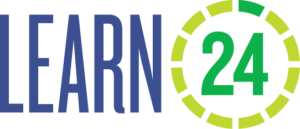
Capital Impact Partners
Lawrence Bostian
Elinor Coleman and David Sparkman
Rick Davis
Robert Fox and Jane Welna
Evan Gay
Andrew Goodman
Nonna Noto
Marcus Smith
Mary Snieckus

